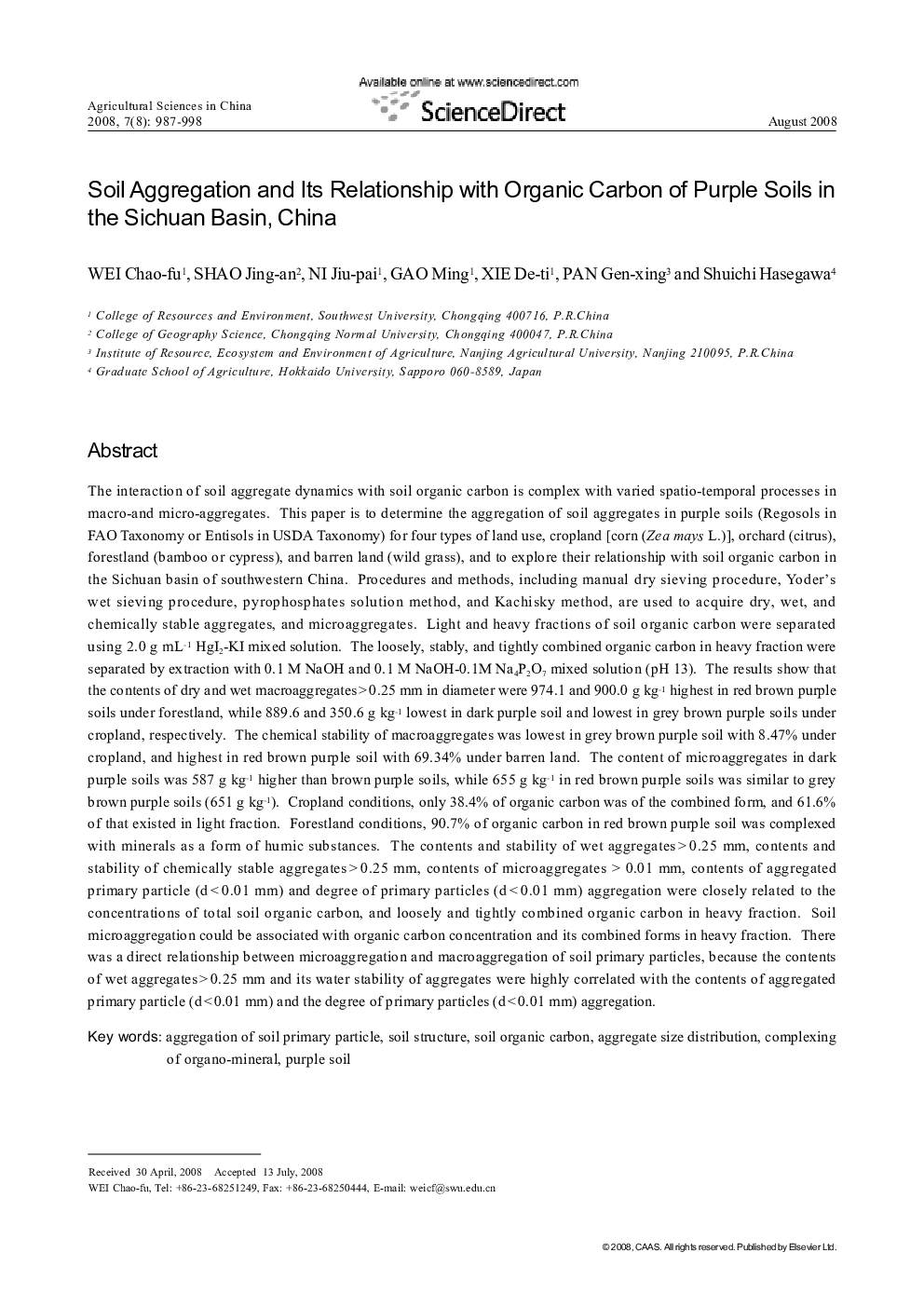| Article ID | Journal | Published Year | Pages | File Type |
|---|---|---|---|---|
| 4490641 | Agricultural Sciences in China | 2008 | 12 Pages |
The interaction of soil aggregate dynamics with soil organic carbon is complex with varied spatiotemporal processes in macro-and micro-aggregates. This paper is to determine the aggregation of soil aggregates in purple soils (Regosols in FAO Taxonomy or Entisols in USDA Taxonomy) for four types of land use, cropland [corn (Zea mays L.)], orchard (citrus), forestland (bamboo or cypress), and barren land (wild grass), and to explore their relationship with soil organic carbon in the Sichuan basin of southwestern China. Procedures and methods, including manual dry sieving procedure, Yoder's wet sieving procedure, pyrophosphates solution method, and Kachisky method, are used to acquire dry, wet, and chemically stable aggregates, and microaggregates. Light and heavy fractions of soil organic carbon were separated using 2.0 g mL-1 HgI2-KI mixed solution. The loosely, stably, and tightly combined organic carbon in heavy fraction were separated by extraction with 0.1 M NaOH and 0.1 M NaOH-0.1M Na4P2O7 mixed solution (pH 13). The results show that the contents of dry and wet macroaggregates > 0.25 mm in diameter were 974.1 and 900.0 g kg-1 highest in red brown purple soils under forestland, while 889.6 and 350.6 g kg-1 lowest in dark purple soil and lowest in grey brown purple soils under cropland, respectively. The chemical stability of macroaggregates was lowest in grey brown purple soil with 8.47% under cropland, and highest in red brown purple soil with 69.34% under barren land. The content of microaggregates in dark purple soils was 587 g kg-1 higher than brown purple soils, while 655 g kg-1 in red brown purple soils was similar to grey brown purple soils (651 g kg-1). Cropland conditions, only 38.4% of organic carbon was of the combined form, and 61.6% of that existed in light fraction. Forestland conditions, 90.7% of organic carbon in red brown purple soil was complexed with minerals as a form of humic substances. The contents and stability of wet aggregates > 0.25 mm, contents and stability of chemically stable aggregates > 0.25 mm, contents of microaggregates > 0.01 mm, contents of aggregated primary particle (d < 0.01 mm) and degree of primary particles (d < 0.01 mm) aggregation were closely related to the concentrations of total soil organic carbon, and loosely and tightly combined organic carbon in heavy fraction. Soil microaggregation could be associated with organic carbon concentration and its combined forms in heavy fraction. There was a direct relationship between microaggregation and macroaggregation of soil primary particles, because the contents of wet aggregates > 0.25 mm and its water stability of aggregates were highly correlated with the contents of aggregated primary particle (d < 0.01 mm) and the degree of primary particles (d < 0.01 mm) aggregation.
